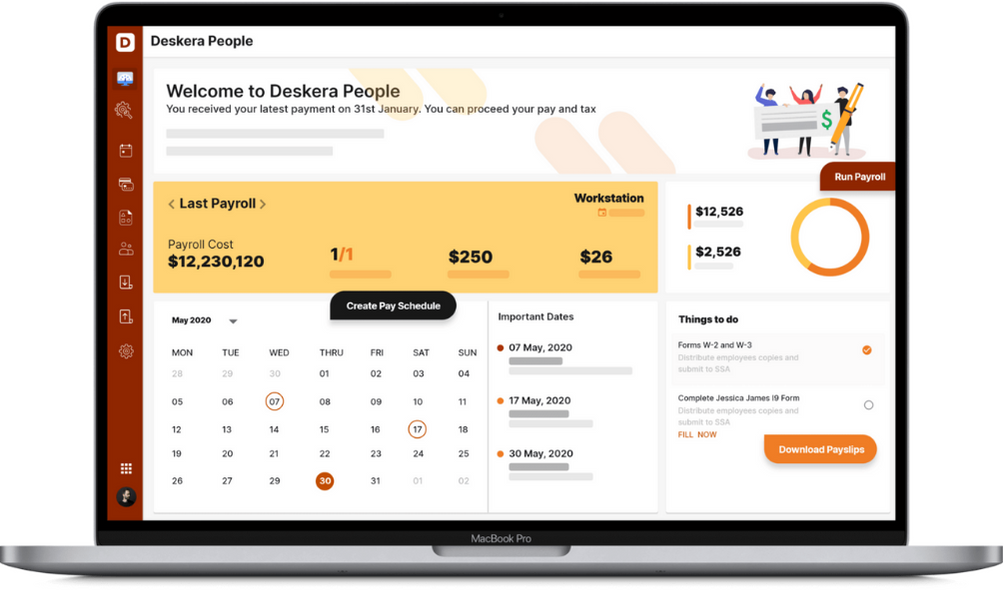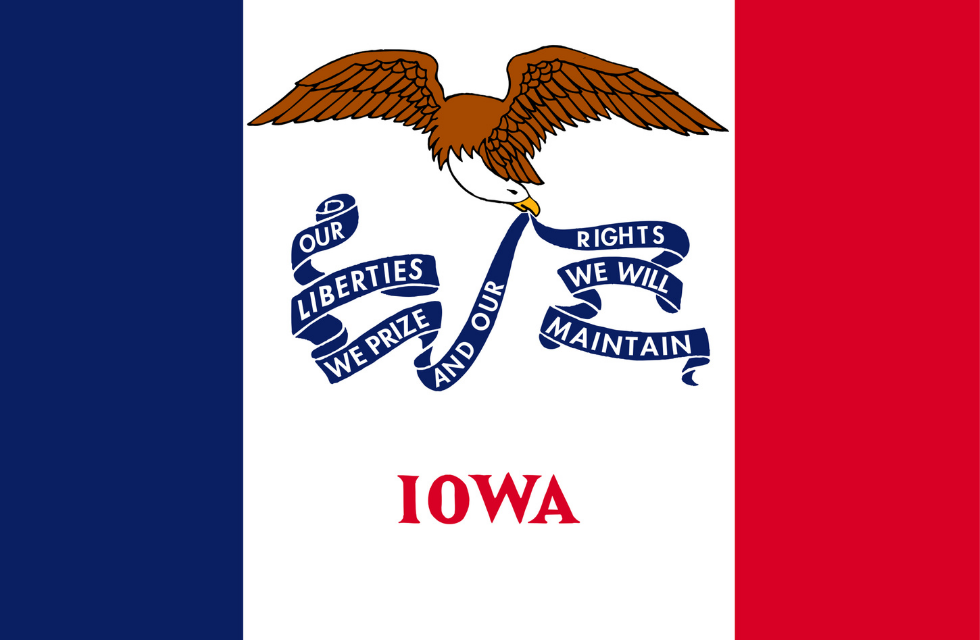Payroll taxes in the US refers to the tax deducted to look after Medicare (MedFICA) and social security programs (FICA) and are deducted from employee salaries. Most states collect these taxes.
The employer pays the federal unemployment tax on a per-employee basis, not the employee. A few specifics of the payroll tax are taxed up to a certain yearly limit.
Payroll tax deductions appear on the employee's payslip. Local governments can also levy small payroll taxes to maintain local infrastructure and services.
Jeffrey, who recently joined a medical firm in Minnesota, was shocked to see an amount on his salary slip that stated a deduction of payroll tax. He had no clue and wasn't told about this deduction that was specific to Minnesota (the amount). It could vary if he was working in another state or city.
You must know about the charges levied by different states and cities of the US that charge employees of a payroll tax system.
Here's a rundown of what will be covered:
- Minnesota Payroll Taxes
- Access To Your Minnesota taxpayer number
- Minnesota Wage And Time Laws
- Minnesota Tax Withholding Requirements
- Minnesota Payroll Calculators
- What Is The Minnesota State Salary Tax Obligation?
- How To Register Yourself As An Employer
- What Are The Requirements For Tax Filing And Returns In Minnesota?
- For The Withholding Of Income:
- Taxes On Unemployment
- Procedure and Rules Regarding Minnesota Payroll Licensing
- Minnesota Employer License Requirements
- Tax Withholding
- Minnesota Payroll Or Salary Calculation For Employers
- Minnesota Income Tax Withholding
- Simple and Easy Process and Regulations of Minnesota Payroll
- Minnesota Voting Rights:
- Calculation of Minnesota Payroll
- Federal Payroll Taxes
- Calculate The Gross Amount Of Wages
- Minnesota Income Tax Rate
- Minnesota Unemployment Insurance (SUI)
- Additional Minnesota Payroll Tax Resources
- For Administrators
- About the Minnesota W-4 Form
- When Do Employees Need To Fill Out The W4MN Form?
- When To Submit A Copy Of The W4MN Form To MN Revenue?
- Mail destination
- Minnesota Payroll Tax Form Information 1099
- Form processing tips
- Conclusion
- Key Takeaways
Introduction
There are many wonderful things in Minnesota - the Mall of America, the largest urban sculpture garden in the United States, a 52-block skyway system with 90,000 miles of coastline.
There's everything great in a land with 10,000 lakes, but perhaps the biggest thing for you is the success of your small business. That's why we're here to help you calculate another issue that might get in your way: payroll tax.
Minnesota Payroll Taxes
Minnesota incorporates one of the highest income taxes in the United States. It is a progressive income tax system, and here we will guide you on how you can track your Minnesota payroll taxation, how you can check your salary tax using a Minnesota payroll machine, and certain substantial imperatives you need to follow.
To start with, you must keep track of the following and keep some crucial information handy while calculating your Minnesota Payroll taxation:
Access To Your Minnesota taxpayer number
Workers subject to the Fair Labor Standards Act have the right to receive the state's minimum wage of $7.25 per hour instead of the state's minimum wage of $10.08 per hour (for large employers) or an hourly $8.21 for all other employers.
Minnesota Wage And Time Laws
Large employers subject to the Minnesota Minimum Wage Act must pay workers a minimum of $10.08 per hour. Small employers must pay a minimum of $8.21 per hour. A large employer is one with total annual sales or business volume of at least $ 500,000.
Employees subject to the Fair Labor Standards Act are required to be paid the federal minimum wage of $7.25 per hour.
All employees except the following are eligible for the above:
- Sales reps who make more than 80% of their sales off the employer's premises
- Certain agricultural workers
- Taxi drivers
- Qualified and working employees who are under the control and direct supervision of the US Department of Transportation
- Sailors or Seafareres
- Members of any religious order
Minnesota Tax Withholding Requirements
You need to register as an Employer on the Minnesota Employment Development Website and get access to the Employee Tax Withholding Certificate in the form of W4MN.
- Withholding tax Method: Formula
- Additional charge: 6.25%
- Local business tax: None
Minnesota Payroll Calculators
Calculate your Minnesota net payroll or enter payroll information, W4, and Minnesota state W4 information to bring your salary home. The following calculators will help with calculations:
- Minnesota Payroll Calculator
- Minnesota Hourly Payroll Calculator
- Minnesota Gross Up Calculator
- Minnesota Bonus Tax Rate Calculator
- Minnesota 401k Calculator
- Minnesota Dual Scenario Payroll Salary Calculator
- Minnesota Dual Scenario Payroll on an hourly basis Calculator
What Is The Minnesota State Salary Tax Obligation?
Minnesota requires employers to withhold income tax from their employees' salaries in addition to the unemployment tax paid by their employers.
Tax rates in Minnesota: Minnesota employees fill out the W4MN Minnesota Employee Withholding Allowance / Tax Exemption Certificate Form, which is used to calculate the withholding tax. Minnesota has mutual recognition agreements with Michigan and Nosdakota.
Local tax: There is no local tax in Minnesota.
How To Register Yourself As An Employer
If you are an employer, you would need to register on both the below-mentioned agencies if you are in Minnesota:
- Minnesota Treasury or Department of Revenue for withholding state income tax from employee wages. Employers can register online with the Minnesota Revenue Department services for Business
- Employer tax on unemployment at the Minnesota Department of Employment and Economic Development. You must register online through your employer's self-service system
What Are The Requirements For Tax Filing And Returns In Minnesota?
You will need to fill out the following forms for Minnesota payroll that must be submitted:
For The Withholding Of Income:
- Form MN MW-1 or 1A Minnesota Quarterly Return for quarterly or annual claimants, respectively
- For quarterly applicants, MW1 must be paid on the last day of the month following the end of the calendar quarter (April 30, July 31, October 31, and January 31)
- For annual applicants, MW1A expires by February 28 each year
- Form MN MW-5 Minnesota Income Tax Withholding Coupons are paid in the form of 1 EMI per week, monthly, quarterly, or yearly according to the Minnesota Treasury schedule
- Employers can file and submit tax withholding through the Minnesota Treasury's services/Minnesota Department of Revenue's e-Services for Business
Taxes On Unemployment
Form MN MDES-1 Minnesota Quarterly Contributions should be claimed and filed on the last day of the month following the end of the calendar quarter (April 30, July 31, October 31, and January 31) to report any unemployment insurance tax.
This must be paid and submitted online through the Employer Self-Service System of the Minnesota Employment and Economic Development Department.
The Minnesota Treasury provides additional information on the state's income tax withholding. You can check the Minnesota Withholding Tax Guide, Instruction manuals, Tax Tables, and Tax Charts for more information.
Procedure and Rules Regarding Minnesota Payroll Licensing
Minnesota Employer License Requirements
Several compliance providers help in employer payroll tax registration services in all states to help companies hire employees and process payroll on time. In most states, the two payroll taxes are tax withholding and unemployment insurance (also known as unemployment tax and unemployment allowance).
The employer must register for an appropriate account to hire employees, process salaries, and file tax returns.
Given the virtual, stationary, and temporary nature of employees, registrations are often short-term and span multiple states. In most states, foreign qualifications and registered agents are required.
Tax Withholding
Minnesota withholding tax is a state income tax that you, as an employer, deduct from your employees' wages, then send the money to the Minnesota Revenue Department as a deposit and file a tax withholding declaration. Withholding tax applies to almost all payments made by employees to the services they make on behalf of the company.
See Federal Circular E, IRS Publication 15, and Tax Withholding Obligations for more information on withholding requirements.
Minnesota Payroll Or Salary Calculation For Employers
The employer must pay wages at least once every 31 days on a given regular payday. Wages earned in the first half of the first 31 days must be paid on the first regular payday after the first day of work unless paid early.
- Taxable Wage Base ($ 000): 35,000
- Rate of the new employer (% of taxable wages): 1.1 - 9.0
Minnesota Income Tax Withholding
Employers are required to withhold income tax from the wages of residents and foreigners. Employers operating in Minnesota must withhold state tax from taxable wages paid to eligible employees. However, non-residents prove that they qualify for a tax credit for income tax paid to their country of residence.
Minnesota residents working in Michigan and North Dakota are exempt from tax withholding and reporting in these states.
Simple and Easy Process and Regulations of Minnesota Payroll
Minnesota Voting Rights:
- Employer Rights to Set Voting Time - Yes
- Voting Leave Wage Deduction - Ban
- Minnesota requires employers to give employees ample leave to vote. The law does not specify the amount of leave that must be granted to an employee.
Calculation of Minnesota Payroll
All you have to do is get the W4 and wage information for each employee and enter it into a convenient payroll machine. The appropriate agency/calculator will calculate it for you to write your salary and take care of your taxes.
Federal Payroll Taxes
Federal taxes make up the majority of payroll taxes. Here's a quick explanation of what you need to know about federal income tax. Read the step-by-step guide for more details for a detailed overview.
Calculate The Gross Amount Of Wages
Step 1: For all employees, multiply the working hours by the wage rate every hour. Don't forget to increase their overtime pay.
Step 2: For all employees, divide each employee's annual salary by the number of salary periods. Remember to add bonuses, tips, and commissions to every employee. They all count towards total wages.
Step 3 - Calculate pre-tax deductions: If employees make FSA, HSA, 401 (k) contributions, or have other pre-tax benefits, make sure you compute all such transactions separately and deduct them appropriately from total salary before calculating salary tax.
Step 4: Deduct federal income tax. Federal tax rates range from 0% to 37% of taxable income. We won't go into details here, but please visit the IRS website for more information on withholding.
Step 5: Adjust by deducting all FICA taxes. Social security tax is 6.2% of each employee's taxable wage until it reaches $147,000 in the 2022 tax year. This means that the maximum social security tax that each employee must pay is $8,853.60 per year. The employer must also remit a 6.2% dollar-to-dollar tax.
Step 6: Calculate Medicare tax. This is 1.45% of each employee's taxable wages, up to $200,000 per year. For wages above $200,000, an additional Medicare tax is levied at the rate of 0.9%, for a total tax rate of 2.35%. The employer must pay the corresponding 1.45% Medicare tax, not the additional medicare tax. In this case, only the employee is responsible for paying the additional 0.9% Medicare tax.
Step 7: Calculate the FUTA unemployment tax. This is 6% of the first $7,000 of each employee's taxable income. FUTA tax payments are paid only by the employer and not by the employee. However, there is a big caveat here. If you pay the state unemployment tax in full on time, you are eligible for a tax credit of up to 5.4% and an effective FUTA tax rate of 0.6%. If you don't get that 90% FUTA tax savings to pay on time, it becomes pointless as this deal is surely enticing.
Step 8: The deduction amount after tax will be deducted. This can range from court-ordered wage decorations to child support. Most employees are not eligible for post-tax deductions, but you should still be careful.
Minnesota Income Tax Rate
Minnesota has a progressive system of calculating and charging income tax. In other words, the more money an employee earns, the higher the income tax. Income tax rates are between 5.35% and 9.85%.
State taxes are considerably higher than in other states, but Minnesota does not collect local taxes.
Minnesota Unemployment Insurance (SUI)
The employer is obliged to pay state unemployment insurance. Minnesota's system of calculating this tax is very complicated.
Tax rates change from year to year and vary by many factors, such as wages and industry, but generally range from 0.57% to 10.716%. Unemployment taxes are particularly complex in construction and can be as high as 8.9%.
One constant for all employers is that the wage base is $38,000 for each employee.
Once you have withheld and calculated the net salary for each employee, you are ready to distribute your wealth. Don't forget to set aside the employer tax your company pays, or you will face a big tax surprise at the end of the year.
The federal tax return must be paid quarterly by filing Form 941 and annually by filing Form 940. You can pay taxes continuously through the EFTPS payment system.
Additional Minnesota Payroll Tax Resources
For Administrators
Required account number: Companies that pay employees in Minnesota must register their tax identification numbers online with the Minnesota Revenue Department and register their unemployment insurance employer account numbers online with the Minnesota Department of Employment and Economic Development.
- Minnesota Revenue Bureau ID number: 9999999 (7 digits)
- Register online at the Minnesota Revenue Department to receive your taxpayer number immediately
- You must register online for a taxpayer number
- You can also search online at the Minnesota Revenue EServices Portal if you have an existing taxpayer number
- MN Unemployment Insurance (UI)
- Employer Account Number: 9999999 or 099999990999 (7 or 12 digits)
Registering for Unemployment Minnesota online will immediately provide you with your UI employer's account number and temporary password, allowing third-party agents to file and pay MN'sMN's unemployment tax.
- Search for an existing UI employer account number online at Unemployment Minnesota's Employer Self Service portal
- You can also contact the Minnesota Employment and Economic Development Bureau.
- Required salary documents
- Tax withholding
- Tax withholding returns must be submitted electronically. Use a payroll report that includes the employee's social security number, quarterly wages, and withholding amount
- The quarterly UI unemployment allowance detail report is submitted electronically
- Use a payroll report that includes the employee's name, social security number, total wages, and paid working hours
About the Minnesota W-4 Form
Unless you have a pre-2020 state W4 record, all employees must fill out W-4MN.
When Do Employees Need To Fill Out The W4MN Form?
Employees fill out the W4MN form when they start working or when their personal or financial situation changes. You must maintain all forms for your records.
When To Submit A Copy Of The W4MN Form To MN Revenue?
Employees need to submit a copy of the W4MN form to the department if:
- Claims more than 10 Minnesota withholding taxes
- Claims a Minnesota withholding tax exemption by using the Check Box A or B in Section 2 and reasonably believing that your employee's wages will exceed $ 200 per week (exception: employee)
- The employee should be a resident of a reciprocal state and fills out the MWR form
- If the employees are not eligible to receive the requested number of allowances
Note: You do not need to check the number of withholdings that each employee charges.
Mail destination
- Minnesota Revenue, Mail Station 6501, St. Paul, MN 551466501
- Required W4MN forms that have not been submitted to the department may be subject to a $50 penalty
Form W4MN Link to W4MN's Minnesota Revenue Website Form, W4MN Form W4MN, a Minnesota Employee Withholding Allowance/Tax Exemption Certificate, is equivalent to Minnesota's Federal Form W4. Employees must complete Form W4MN to determine Minnesota withholding.
You may also need to submit a W4MN form to the Minnesota Revenue Department.
Minnesota Payroll Tax Form Information 1099
The following forms, including W4MN, do not require approval, can be completed online without a web file, and are due before January 31. If Form W4MN is not submitted when needed, there will be a $50 penalty.
Minnesota Payroll Tax Form Information
1099 forms
- 1099B
- 1099DIV
- 1099G
- 1099INT
- 1099MISC
- 1099OID
- 1099PATRN
- 1099R
- 1099S
- W-2G
- 1099 NEC
Adjustment of the due date to non-bank days is possible.
Form processing tips
Tip 1 – The MN DEED-1D Worksheet Internet files support multi-unit reporting. For more information, see Add Workplace Report Units.
Tip 2 - File transfer option - you must be registered with the Secretary of State of Minnesota as a payroll service or accountant.
Tip 3 - ICESA file format - Go to the Minnesota Unemployment Insurance homepage and select Employer Login. Sign in to EFile using the file transfer option.
Tip 4 - Minnesota Withholding Tax Withholding Worksheets MW1 and MW5 Minnesota Revenue Department for which registration is required.
Tip 5 - File format Fixed length. The file was created using a very special format, and you need to make sure that the format you choose matches the one listed in the file format of the Minnesota Preservation Worksheet.
Tip 6 - Go to the Minnesota Revenue Department and register for eFile Minnesota. Choose the exact format option as shown below:
- Date: YYYYMMDD
- Amount: 1000.00
- Format option: Fixed length format
- State ID format
- Unemployment ID: 8 digits (enter to remove hyphens and spaces)
- Tax withholding ID: 7 digits (note that the first digit cannot be zero)
Tip 7 - New employee reporting method:
- File upload type: Internet
- General reporting requirements
- Required electronic filing: No
- Submission frequency: 20 days from the hire date
- Registration required: Yes
Conclusion
All states of the US have their own set up of payroll taxes that can differ minutely or majorly. This was all about dealing with and filing your Minnesota payroll taxes that you must learn through the IRS and check out all details of the appropriate form filling and submission to save yourself the hassle of missing out.
How Can Deskera Assist You?
As a business, you must be diligent with employee leave management. Deskera People allows you to conveniently manage leave, attendance, payroll, and other expenses. Generating payslips for your employees is now easy as the platform also digitizes and automates HR processes.

Key Takeaways
- Minnesota Payroll taxes are withheld from every employee's salary and submitted to the government
- In the US, different states have their specified payroll taxes, which are used to provide benefits like medical facilities and Social Security
- Payroll taxes are applied by the government for specific programs and can even cover unemployment
- Income taxes become a part of the government's general fund
Related Articles











